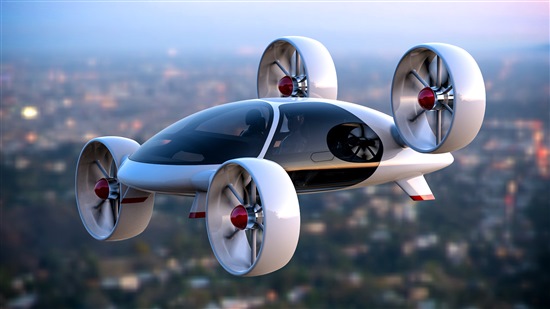Flying cars ready to take to Moscow’s skies
Shura Collinson
For decades, mankind has dreamed of flying cars. Today, they are no longer the stuff of fantasy, and while they might not look exactly like those in the “Back to the Future” films, flying cars are now an impending reality.
At the MAKS air show outside Moscow earlier this month, Alexei Fursin, head of the Moscow government’s department for science, industrial policy and entrepreneurship, said that local projects for flying taxis on display at the event offered a “glimpse into the future.”
“Flying cars were a dream; now they’re a plan,” says Ilya Khanykov, business development director of Project Bartini, a resident startup of the Skolkovo Foundation’s space technologies cluster that is developing a flying taxi. The company’s logo is: “Weird to think of – in 1985. Easy to hop on – in 2020.”
Bartini’s ultimate goal is the mass-scale production of a fully autonomous four-seater car, but it expects to launch a two-seater as early as next year. The vehicle will take off and land vertically, and fly at heights of up to 1,000 metres over distances of up to 200 kilometres. Its batteries currently enable it to fly for up to 30-40 minutes, but hydrogen fuel cells, which are gradually being introduced to vehicles by companies such as Toyota, will triple the flying time, if not increase it tenfold, says Khanykov.
At first, the vehicles will likely have a pilot who will essentially need the same skills as a drone operator, but eventually, the taxis are planned to be fully autonomous. They will detect other flying devices, ensuring they avoid collisions, and will automatically avoid prohibited areas such as the airspace close to airports, said Khanykov.
Flying cars are not a new idea, but until recently, people had got used to designs for them failing due to a lack of feasible technology, says Khanykov. That changed in April this year with the Uber Elevate Summit in Dallas, at which the ride-sharing app gathered aerospace engineers, air traffic controllers, regulators and investors from all over the world, having released a white paper outlining its plan for a flying taxi service in October 2016.
“For us, them announcing it was a game-changer,” says Khanykov.
The detailed proposal by a major company sent a message to the world that flying cars are no longer confined to science fiction: the technology is ready, and Uber plans to launch flying taxi services in Dallas and Dubaiby 2020. According to the U.S. company’s vision, passengers will order a flying taxi via a mobile app, just like its regular taxi service. The vehicles will take off and land vertically, to overcome the obstacle of the lack of room for runways in cities.
“What they want could be delivered in 2020 with our design,” says Khanykov, adding that Project Bartini was the only Russian company invited to the summit, where topics included noise reduction solutions and rapid battery charger

